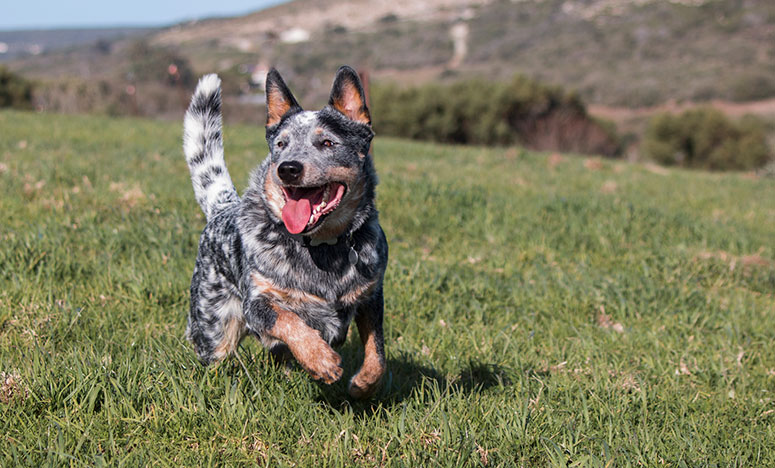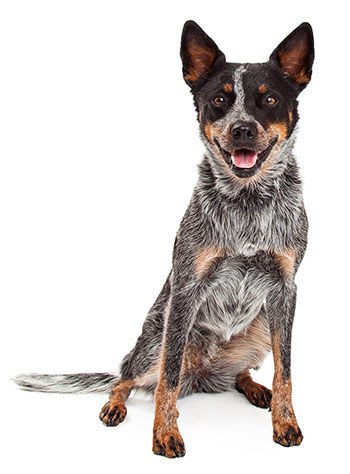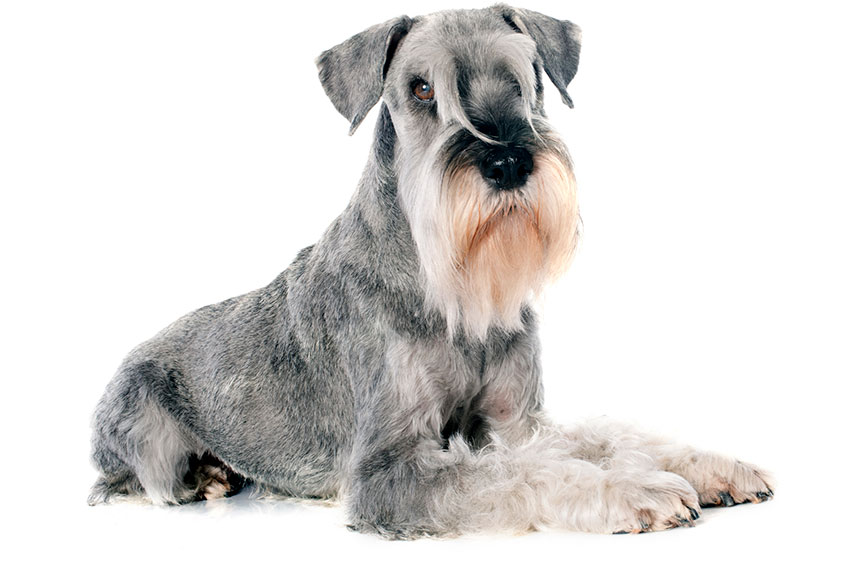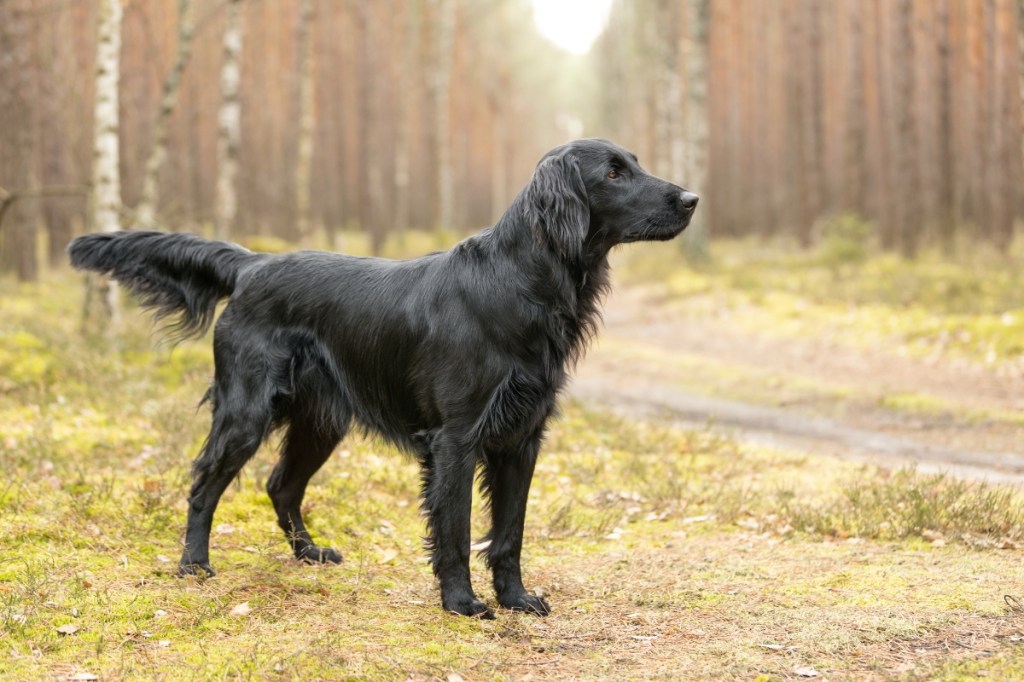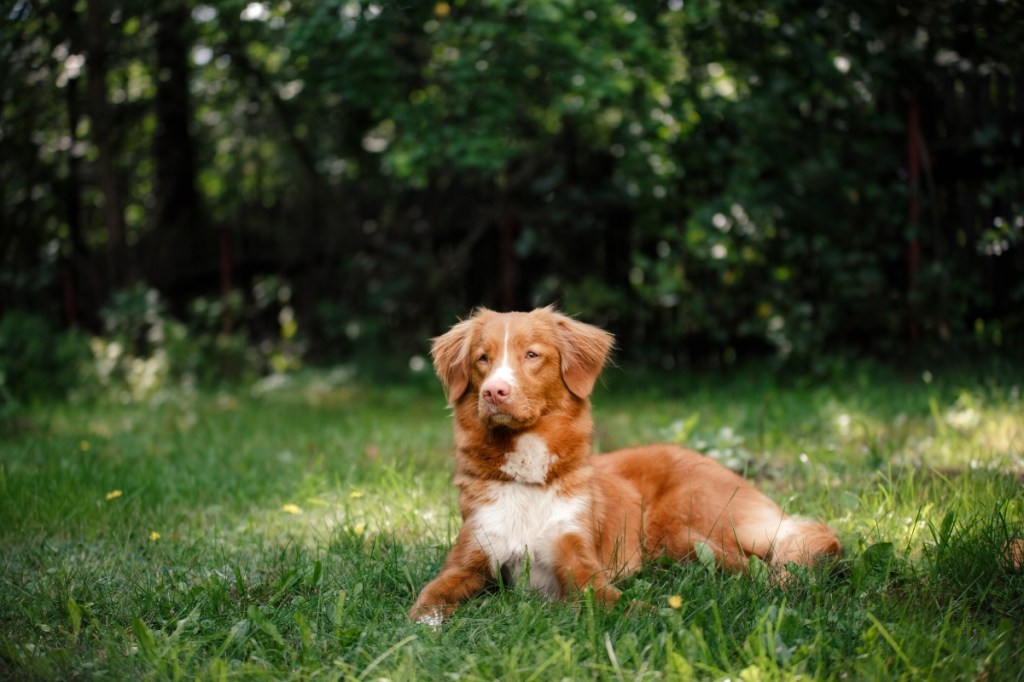Table of Contents
Introduction to Australian Cattle Dogs
The Australian cattle dog, which is also known as the blue heeler or Queensland heeler, is a relative of an Australian wild dog called the dingo. These herding dogs are intelligent, resilient, and sturdy. They are strong and agile with a curious and alert demeanor.
Although they were bred to hunt and move livestock, they also make great household pets. However, families will need to make sure their Australian cattle dogs get plenty of exercise and are mentally stimulated so that they don’t get bored and cause trouble. This is a dog that you’ll need to be able to keep up with, so it might not be the best choice for first-time pet parents, apartment-dwellers, or people who live inactive lives.
To learn whether an Australian cattle dog is the right choice for you and your lifestyle, read this Healthy Paws breed guide for helpful information.
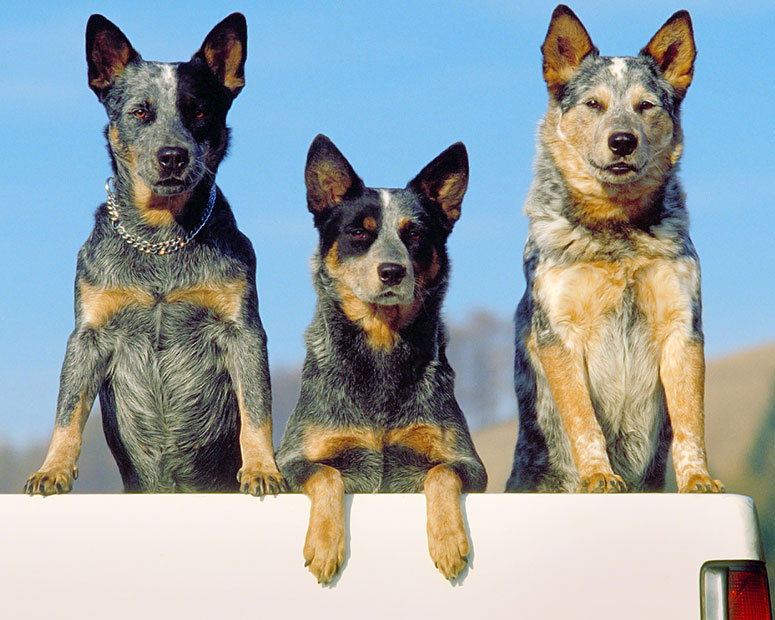
Size of Australian Cattle Dogs
When fully grown, an Australian cattle dog will weigh between 35 and 50 pounds. Females will weigh in at the low end of this range, and males will be at the high end. Male Australian cattle dogs stand at about 18 to 20 inches tall, while females will be closer to 17 to 19 inches tall. These dogs are usually finished growing by one year of age but may continue to get slightly bigger during their second year.
Here’s how big you can expect your Australian cattle dog to get when fully grown.
| Weight Chart | 3 mo | 6 mo | 9 mo | 12 mo | 16 mo |
| Male and female Australian cattle dogs | 12-15 lbs. | 23-26 lbs. | 27-31 lbs. | 30-35 lbs. | 31-45 lbs. |
Characteristics of Australian Cattle Dogs
Australian cattle dogs are very active, loyal, and protective. They have a high energy level and a great attention to detail, which are traits that make them excellent for herding. These dogs are tolerant of both hot and cold weather, have high prey drives, and are very territorial. They are also low-maintenance dogs that are easy to train and groom.
Here’s what you can expect based on an Australian cattle dog’s breed characteristics:
| Breed Characteristic | Level (High, Medium, Low) |
| Affectionate with People | High |
| Good with Kids | Medium |
| Good with Pets | Medium |
| Need for Exercise | High |
| Energy Level | High |
| Intelligence Level | High |
| Able to Be Trained | Medium |
| Amount of Barking | Low |
| Amount of Shedding | Medium |
History of Australian Cattle Dogs
As the name suggests, Australian cattle dogs originated from Australia, where they have made significant contributions to the Australian beef industry and overall economy. The history of this breed is tied to British control over Australia and raising beef cattle on ranches in wild areas. The dogs were bred to be great herders and to be hardy with the region’s extreme temperatures, rough terrain, and long distances to travel. Breeders crossed dingoes, a feral breed of the region, with other types of dogs, such as the Scottish Highland collie, to achieve the characteristics of the durable dog they desired.
George Elliot of Queensland is credited for breeding dingoes with collies and selling them to local farmers. Another key figure in the early breeding efforts was Robert Kaleski, who started breeding the dogs in 1893 and showing them in 1897. In more modern times, the American Kennel Club officially recognized this breed in 1980 and welcomed it to the herding group of dogs in 1983.
Australian Cattle Dog Standard Information
Australian cattle dogs are often part of dog shows and competitions, so well-established canine organizations have developed specific breed standards. In general, these are strong, compact, and symmetrical dogs that are hard-working and desire being put to work.
Here is an overview of the breed standard information for Australian cattle dogs:
Head:
- Balanced and in proportion with rest of the body
- Slightly curved skull that flattens to a slight stop
- Tight and clean lips
- Black nose
- Medium, oval-shaped eyes that are dark brown
- Moderately sized ears
- Scissor bite for teeth
Neck, Topline, Body:
- Muscular neck of medium length
- Neck broadens to blend into body
- Topline level and back strong with well-sprung ribs
Forequarters:
- Strong, sloping, and muscular
- Feet straight and parallel
- Shoulders muscular but without loaded shoulders or heavy front
Hindquarters:
- Broad, strong, and muscular hindquarters
- Hind legs straight and parallel
- Feet with hard pads and short and strong nails
- Tail set moderately low
Coat:
- Smooth coat with a double coat and short, dense undercoat
- Close and rain-resistant outercoat
- Body hairs between 1 to 1 ½ inches long
Color:
- Blue, blue mottled, or blue speckled with or without markings
- Markings are black, blue, or tan
- Tan undercoat permissible if doesn’t show through blue outercoat
- Red speckle all over is acceptable
Gait:
- Free, tireless, and soundless gait
- Feet come closer together at ground level as speed increases
Caring for Australian Cattle Dogs
Australian cattle dogs are designed to roam the wilderness and have a job to do, but these dogs can also be happy as domestic pets if they get enough exercise and simulation. Australian cattle dogs are not content sitting at home alone in a small apartment all day. They need space to run and explore, but you’ll need to make sure that outdoor areas are fenced in so that your dog isn’t tempted to chase other animals or passing cars. While commonly suspicious of strangers, Australian cattle dogs easily become beloved family members that are very affectionate with people they know and are comfortable with.
Here are some general tips for taking the best care of an Australian cattle dog:
Best Living Environments:
- House with a fenced yard
- Apartments are not ideal for this breed
- Best as the only dog in the house
Type of Exercise:
- Playing fetch in a fenced backyard
- Going hiking with family members
- Running around a field
- Going on jogs with trusted people
Mental Enrichment:
- Catching frisbees and balls
- Flying disc competitions
- Obedience training and agility sports
- Problem-solving puzzles
Training Strategies:
- Obedience training from an early age
- Positive reinforcement
- Agility games to challenge the dog
- Dog obstacle courses
Grooming Tips:
- Very minimal grooming required
- Significant shedding twice per year, during spring and fall
- Brush weekly to remove dirt and redistribute skin oils
- Bathe when dirty or smelly
- Trim nails monthly if not worn down naturally with exercise
Common Health Problems of Australian Cattle Dogs
The average life expectancy of an Australian cattle dog is 12 to 16 years. These dogs are generally healthy as long as they get enough exercise each day and are fed a nutritious diet. There are some health conditions that this breed is susceptible to, which are important to be aware of.
Some of the most common health issues that arise in Australian cattle dogs include the following:
- Eye conditions, such as progressive retinal atrophy or lens luxation
- Hip and elbow dysplasia
- Deafness
- Von Willebrand’s disease
- Hypothyroidism
- Urinary crystals or stones
- Muscle abnormalities
- Medication sensitivities (Flea and tick medications, specifically)
Diet and Nutrition for Australian Cattle Dogs
Most Australian cattle dogs need between 1.5 to 2.5 cups of food, depending on their daily activity level. Some recommended commercial dog food brands to consider for your Australian cattle dog are Purina Pro Plan Sport Active, Hill’s Science Diet Advanced Fitness, and Blue Buffalo Life Protection.
Where to Adopt or Purchase Australian Cattle Dogs
If you are looking to bring an Australian cattle dog into your home, a good place to start is the Australian Cattle Dog Club of America. You can also find Australian cattle dog puppies through the American Kennel Club Marketplace if you want a purebred dog and want to purchase a dog. If you would rather rescue a pup and give a good home to an Australian cattle dog in need, there are various rescue organizations throughout the U.S., including the American Cattle Dog Rescue Association and state-specific groups, such as tthe Texas Cattle Dog Rescue.
Related Breeds
If you like what you’ve read so far about the Australian cattle dog, then you might also be interested to learn about the following dog breeds:
- Border collie
- Belgian Laekenois
- Belgian sheepdog
- Australian shepherd
- Shetland sheepdog
Pet Insurance for Australian Cattle Dogs
Whether your Australian cattle dog is a puppy, senior dog, or somewhere in between, pet insurance is a good idea during any phase of life. Healthy Paws offers Australian cattle dog health insurance to cover new injuries, illnesses, cancer, emergency care, genetic conditions, breed-specific conditions, and alternative care.
Request a quote on our website today to take the best possible care of your Australian cattle dog’s health and to be financially prepared for whatever comes your dog’s way.

